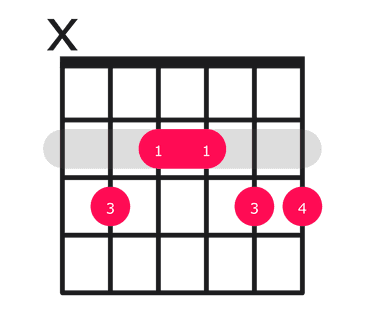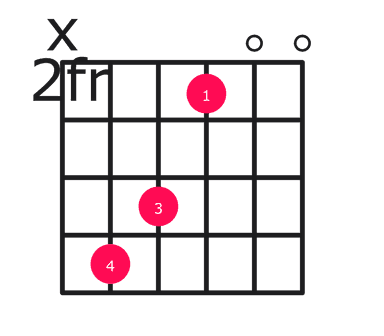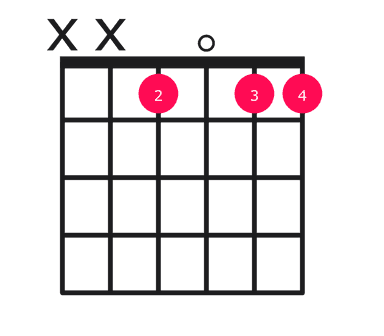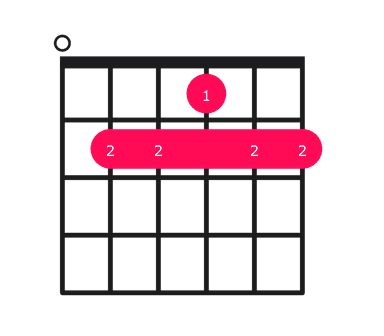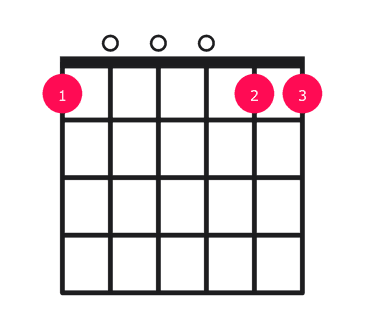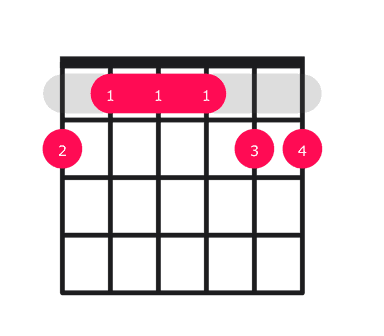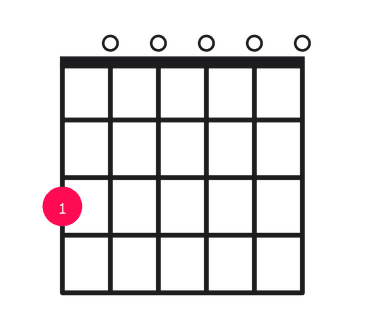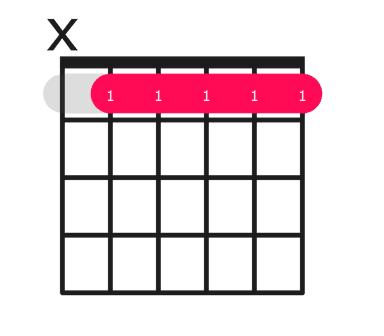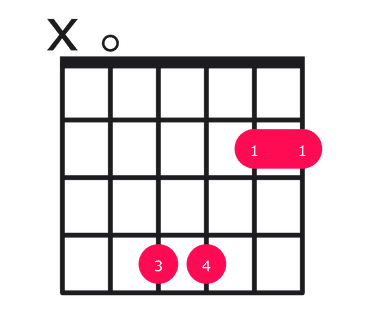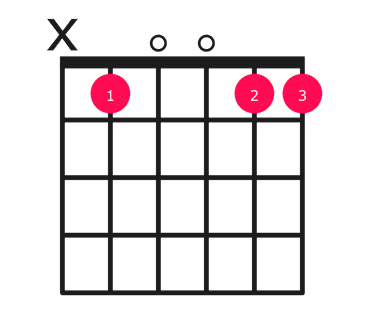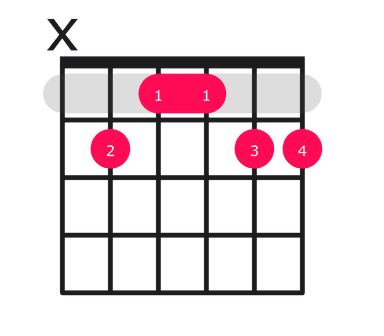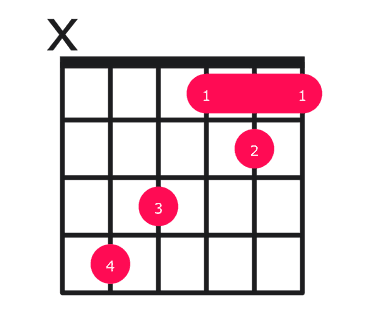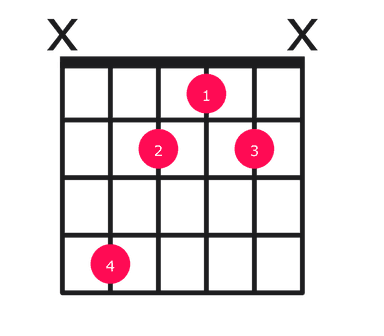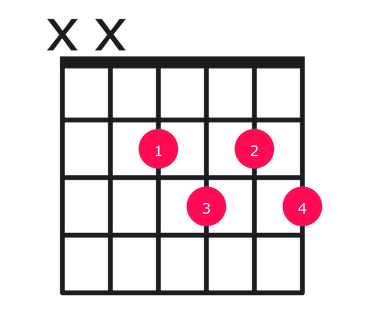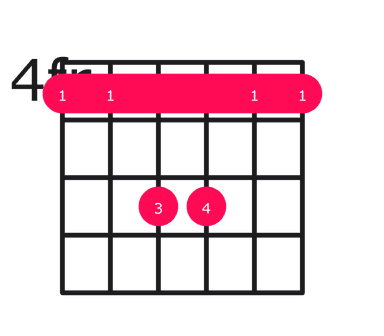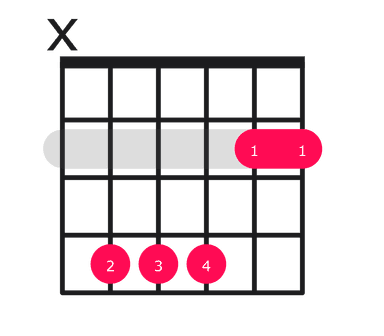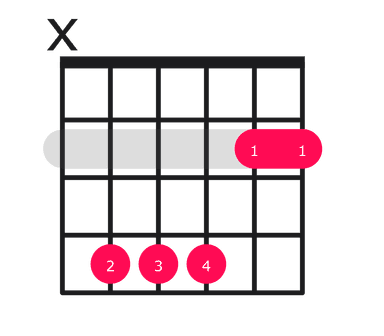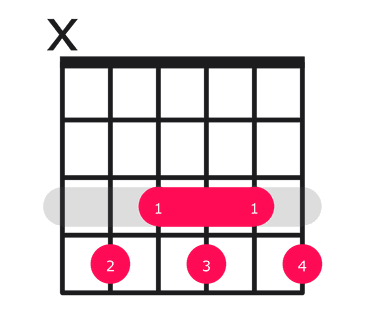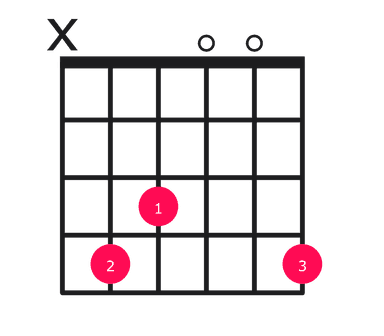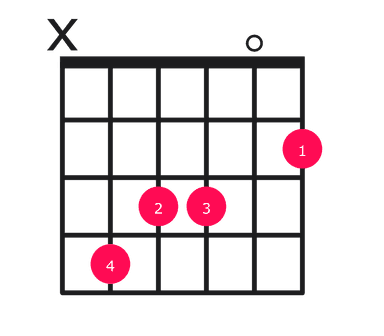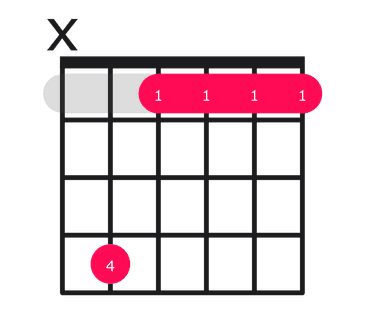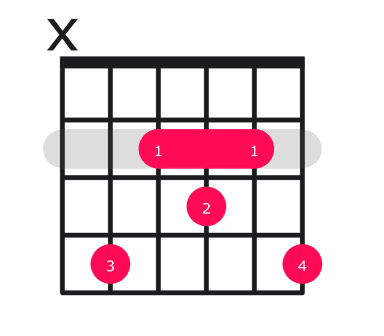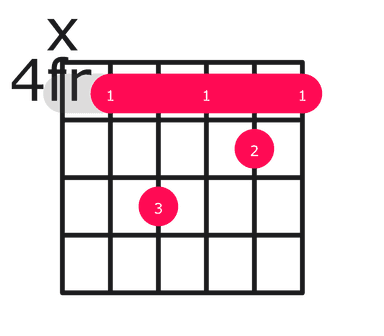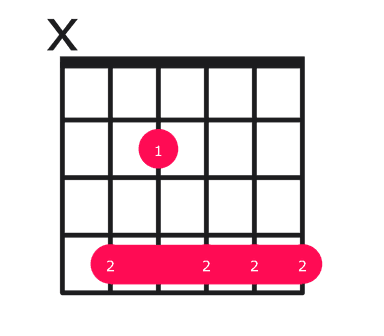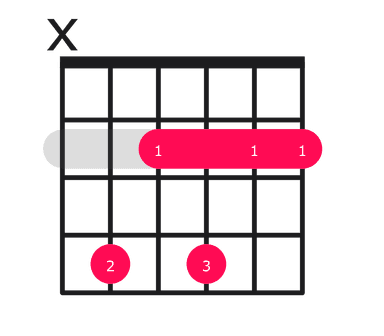How to play the C#69 chord on guitar
Learn to play the dreamy C#69 chord, famously used in "She Loves You" by The Beatles.
The C#69 chord
The C#69 chord, pronounced C sharp sixth added ninth, is a rich and complex voicing that adds a dreamy, jazzy flavor to progressions. Notable for its lush, open sound, the C#69 is favored in neo-soul, R&B, and jazz fusion. Artists like Hiatus Kaiyote and Tom Misch frequently employ this chord to create sophisticated harmonic landscapes in their music.
There are many ways to play a chord. Here's a diagram for the most common C#69 chord. We've also included other versions below.
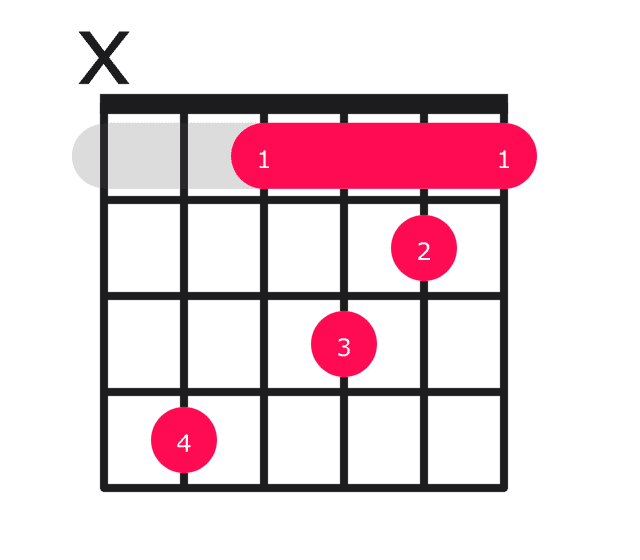
Unlock your playing potential in online guitar lessons with experts on Til. Start today and achieve your guitar goals quickly. Find a top-rated teacher.
Finger placement for C#69 chord
The most common way to play a C#69 chord on guitar is by using a barre chord shape on the 4th fret.
Follow these finger positions to play a C#69 chord on your guitar:
- Place your index finger across all six strings at the 4th fret, forming a barre.
- Place your middle finger on the 5th fret of the 3rd (G) string.
- Place your pinky finger on the 6th fret of the 1st (high E) string.
- Place your ring finger on the 6th fret of the 2nd (B) string.
Strum all six strings together to play the C#69 chord. You can use a simple downstroke or mix it up with a down-up strumming pattern for a more dynamic sound.
How to play an easy C#69 chord on guitar
If you're a beginner looking to play a simpler version of the C#69 chord, try playing a regular C#6 chord instead. Place your index finger on the 4th fret of the A string, middle finger on the 6th fret of the low E string, and ring finger on the 6th fret of the B string.
How to play a C#69 bar chord
The C#69 chord is usually played as an open chord, but there isn't a standard barre chord version that is more popular. Since I'm not extremely confident about the specifics of a popular barre chord version, I'll refrain from providing those instructions to avoid potentially misleading beginner guitarists.
Common C#69 chord progressions
The C#69 chord is often used in dreamy, ethereal progressions that evoke a sense of floating and transcendence. Some common progressions featuring this lush, shimmering chord include:
- I - V - vi - IV (C#69 - F# - G#m - E)
- ii - V - I (D#m7 - F#7 - C#69) Used in "The Long and Winding Road" by The Beatles
- iii - vi - ii - V (E#m7b5 - G#m7 - D#m7 - F#7)
- IV - V - iii - vi (E69 - F#7 - E#m7b5 - G#m7)
- vi - IV - I - V (G#m7 - E69 - C#69 - F#7)
Drills to master the C#69 chord
To master the C#69 chord, try practicing the chord progression C#69 to G#m7 to A#m7 to D#7. This will help you develop muscle memory for the chord shape and train your fingers to transition smoothly between chords.
Another effective drill is to play the C#69 chord as arpeggios, plucking each note individually in ascending and descending order. This exercise will improve your finger dexterity and help you memorize the notes of the chord. Focus on maintaining a consistent tempo and producing clear, ringing notes.
Unlock your playing potential in online guitar lessons with experts on Til. Start today and achieve your guitar goals quickly. Find a top-rated teacher.
Marty W.
"Jamey is a great musician and is sincere in his desire to thoroughly teach the subject at hand. He provided detailed handouts and playing examples, and really went above and beyond my expectations. Highly recommended!"
Songs that feature the C#69 chord
Here are 5 popular songs you can play with the C#6/9 chord.
- I Won't Give Up by Jason Mraz (C#6/9, G#m7, F#m7)
- Hello by Adele (C#6/9, G#m7, A#m7, F#)
- The Scientist by Coldplay (C#6/9, G#m7, A#m7, F#)
- Drops of Jupiter by Train (C, G, F, C#6/9, G#7)
- Fix You by Coldplay (C#6/9, G#m7, A#m7, F#)
How a guitar teacher can help
If you feel stuck in your playing, it might help to take personalized guitar lessons with an expert guitarist. Taking lessons with a pro gives you access to the skills, feedback, and motivation to reach your goals.
You can find expert guitar teachers to support you in the journey. Thousands of people have turned to online guitar lessons on Til, instead of traditional in-person lessons, because Til gives you access to the best teachers in the world from the comfort of home. And with flexible scheduling, secure payments, lesson recordings, and a private chat with your teacher–there’s never been a better way to learn guitar.
